Or at least I was in Duluth when I started writing this. I’m on the Board of our local grocery co-op, Willy Street Co-op, and five of the current nine Board members attended CCMA, the Consumer Cooperative Management Association conference, which was in Duluth. Years ago, in 2011 to be exact, my prior tenure on the Willy Board when I did two terms from 2005 to 2012, I went to CCMA in San Diego. For our group dinner out at that conference, we went to a kind of food truck jamboree. This time, in Duluth we went to a somewhat touristy, but still nice, Italian place on the harbor front.
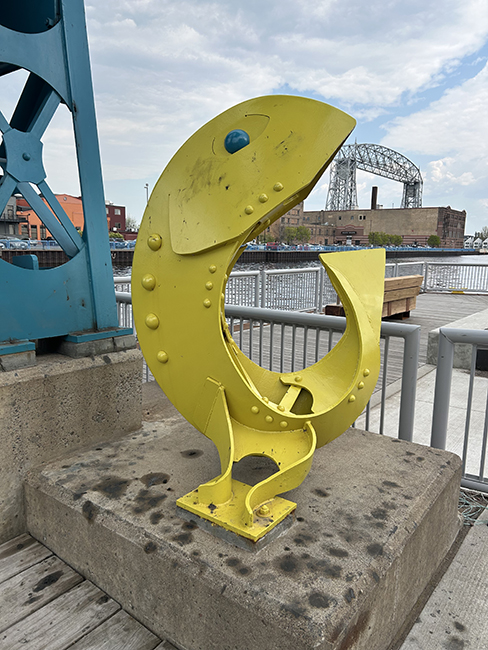
Fish – one of a pair – guarding the entrance to a bridge you walk across to get the harbor front area from the convention center
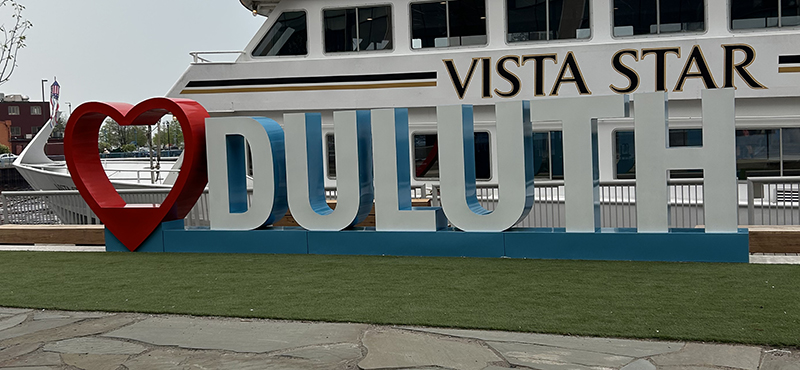
Duluth love
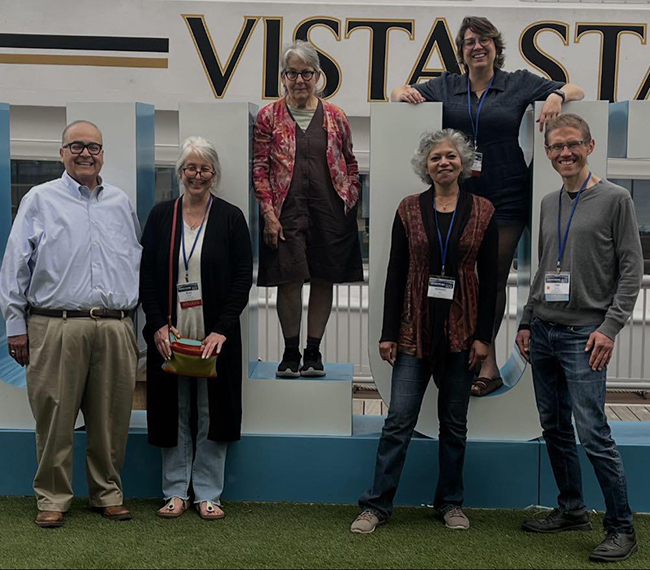
Duluth love populated by the Willy Board contingent
Co-op grocer conferences are a lot like library conferences.
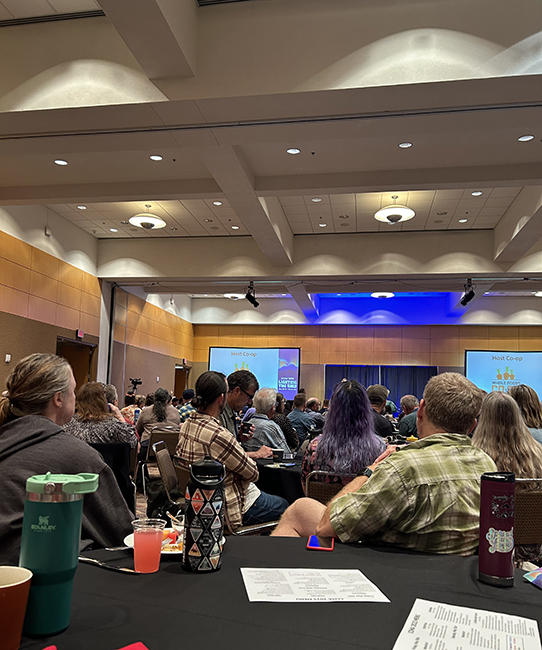
Here’s the view from the morning keynote on Friday.
When we arrived on Thursday, the other two Board members I was with were going to go on tours of local co-ops, and also hungry, so even though my usual method in a strange city is to ditch the car and do as much as possible on foot, we drove directly to the convention center and parked there for $10. We quick grabbed sandwiches at the Northern Waters Smokehaus, that most people were saying was the least tourist-y place on the waterfront, then they went to their tours and I got the car and drove to the hotel, and got checked in and parked. After all that I walked along the harbor path and made it back to the convention center in time for a session on the history of co-ops, followed by the reception. The presenter focused on co-ops in the Upper Peninsula area of Michigan, because that’s where he was from.
Friday and Saturday sessions started at 8:30 with a buffet breakfast before, but there was a snack break at 10:00 so I didn’t feel any pressure to get there in time for breakfast. I made coffee in my hotel room and just concentrated on figuring out how to walk from the Holiday Inn to the Convention Center without using the skywalk and getting over 35 the most pleasant way possible. I finally figured one way Friday afternoon – going farther basically east on the harbor path and crossing there. Then Saturday I found an even shorter way, taking the stairs. You can see the overpass in this pic, though this was Thursday, before I knew how to get on it.
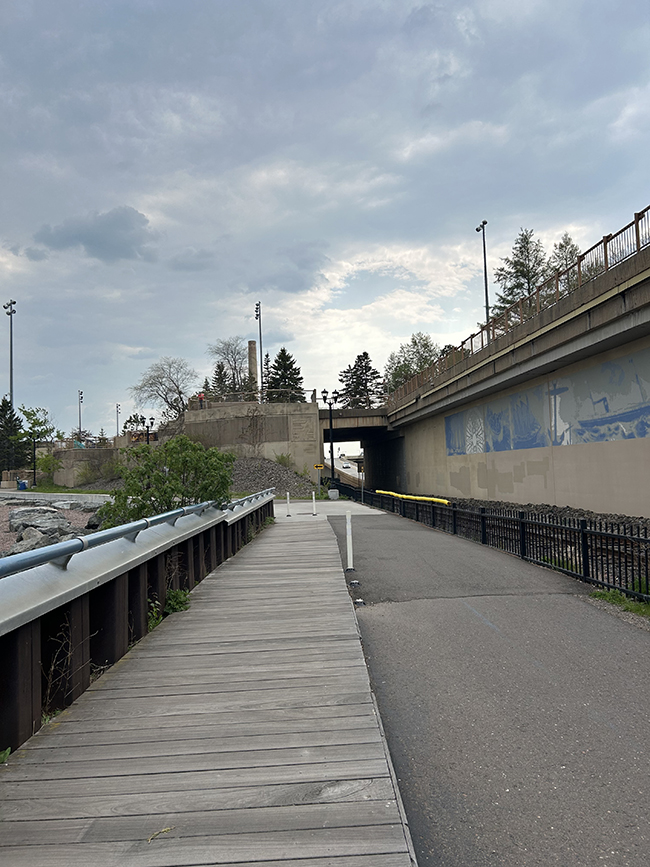
Looking back towards downtown from the harbor path on Thursday afternoon
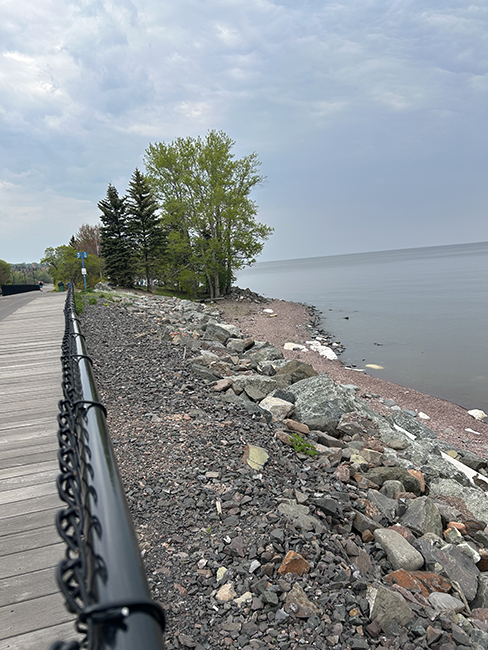
Looking east over Lake Superior
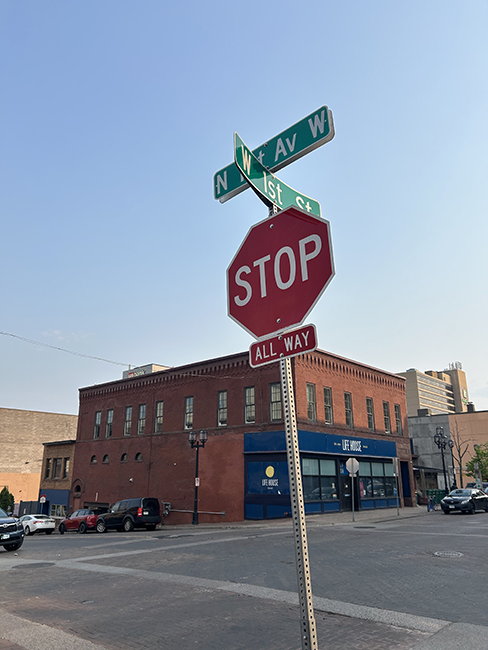
Like Minneapolis, Duluth has 1st and 1st. Avenue and Street. This is Friday.
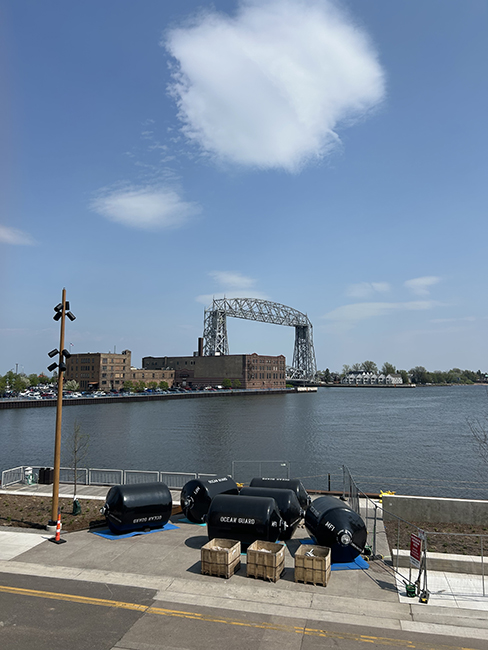
Lift bridge as seen from the Convention Center
Some of the things being talked about were changes in the natural foods market – in the aughts and early 20-teens when I was on the board before, 2006-2012, co-ops had the largest share of the organic and local market. But commercial stores were starting to carry organics, too, probably for the better profit margin. And people wanted local and organic products. Leading to more co-ops, including Willy Street, going hybrid – carrying a mix of organic and conventional products. You can even get honey nut cheerios at Willy Street now. Although waaay back on the 1980s when I first shopped at Willy St, you could buy Roundy’s canned tomatoes for like $1.19 or organic tomatoes for like $3.00, because that’s what the neighborhood wanted. So it’s all cyclical.
People also were talking about how lack of enforcement of the Robinson-Patman Act since the Reagan years is part of what has lead to big grocers, like Walmart and now Amazon getting bigger, and independent grocers getting squeezed out. Which also is part of what has lead to areas in many U.S. cities that used to have neighborhood grocery stores not having those stores anymore. And lack of access to fresh healthy food. And those areas are disproportionately populated by Black and brown people. I also learned that the term “food desert” for those undeserved-by-grocery-stores areas is controversial. Desert is bad because it makes it sound like this lack for grocery stores happened naturally, while actually people did it. It’s because of redlining and policies and racism. And it also makes it sound like these areas are desolate when often there are vibrant communities with community gardens and lots of cultural happenings. One proposed term is “food apartheid” and there were a few heated debates over the term at the conference. Personally I think when white Americans hear food apartheid they just think it’s South Africa and nothing to with them. I wonder if it could be food relining? Or maybe we just say areas that are under-served by grocery stores.
Downtown Duluth near the hotel where we stayed had a lot of empty store fronts. And big old industrial buildings, some fixed up some not. And Duluth still has big nice old houses up on the bluffs. I think the emptiness has got to be from Pandemic – there was more going on the last time I was there, which was a pretty long time ago, 2013, but still.
I never really felt unsafe, but you had to swipe your room key to go up in the hotel elevators and on Sunday morning, Anya found one of the windows of her rental car smashed.
It was pretty hazy in Duluth from the Canadian wildfires.
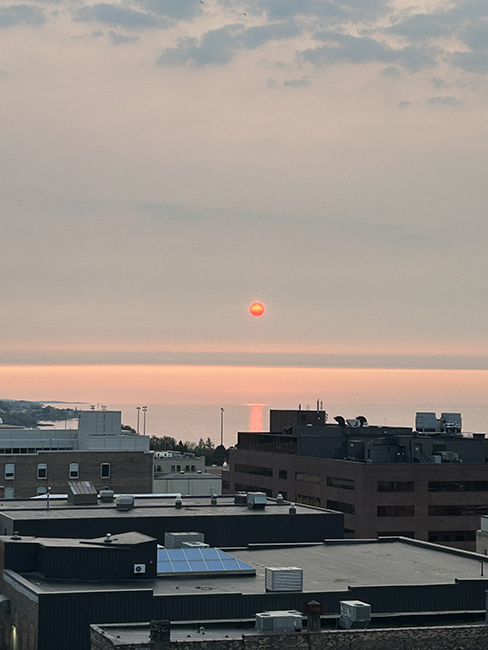
Sunrise over Lake Superior
The haze followed us home and to a busy week, with interviews and CSA recipes and Jasper and lots of stuff breaking. More on that next post. I’ve been struggling to finish this one since Tuesday, so here’s what me and Jasper did on the rainy Wednesday before I went to the conference – played at the children’s museum.
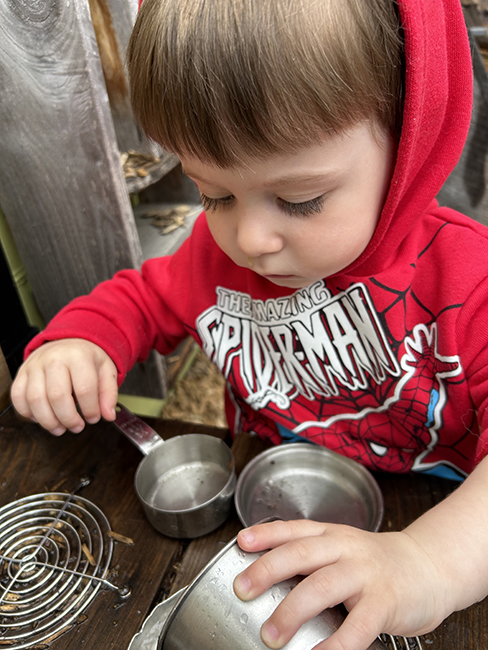
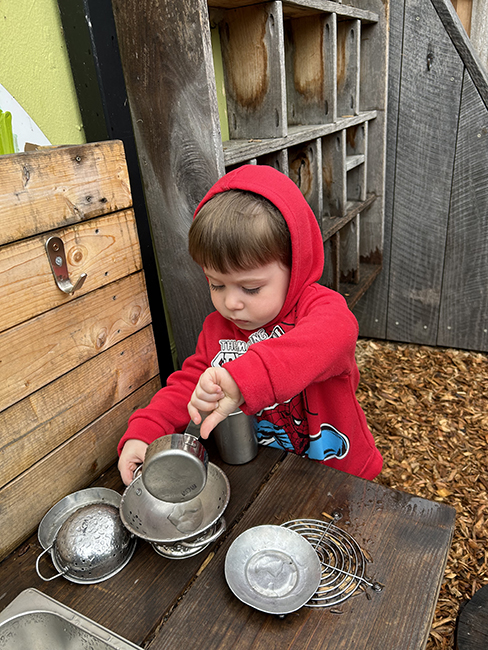
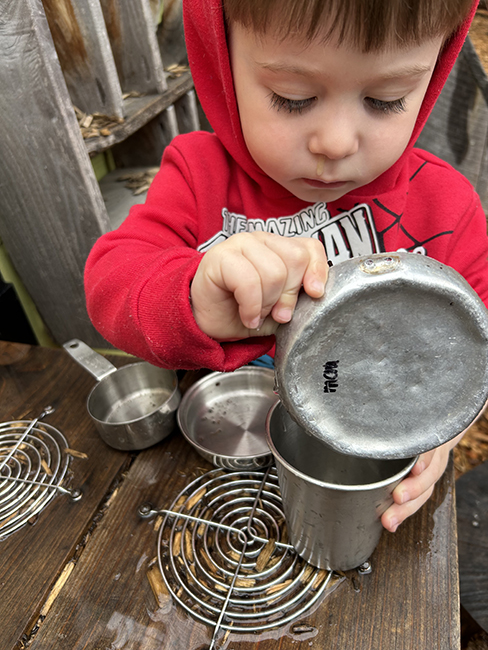
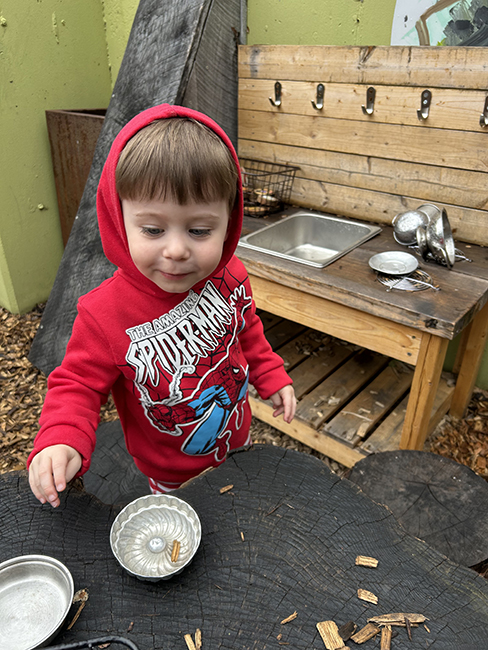

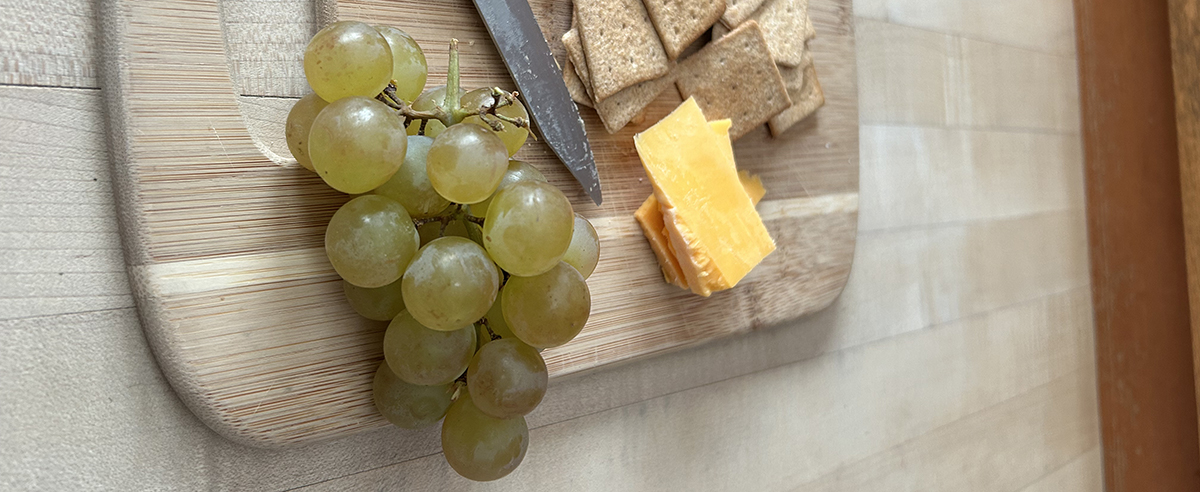
Comments are closed, but trackbacks and pingbacks are open.